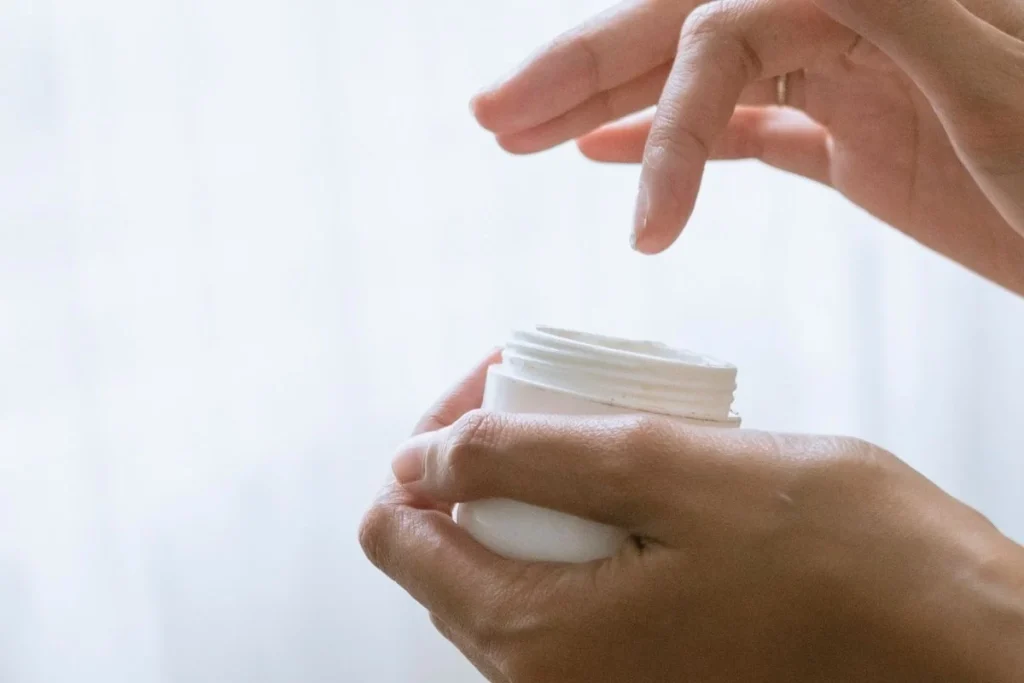Why is My Aquaphor Watery and Melted?
Many people use the versatile ointment aquaphor to hydrate and moisturize dry, cracked skin. It can also be used to help protect and soothe minor cuts, scrapes and burns. Aquaphor has a smooth, petroleum-based formula that creates a protective barrier on the skin, locking in moisture and allowing skin to heal.
If you’re a regular Aquaphor user, you may have noticed your ointment looks different than normal – specifically, it appears watery, melted or even separated. There’s no need to panic or throw it out! Let’s discuss the common reasons Aquaphor can become liquefied and if it’s still safe and effective to use.
Reasons Why Aquaphor May Become Watery
Contents
There are a few key reasons your Aquaphor may take on a more liquid-like appearance:
Exposure to Warm Temperatures
The main culprit for melted Aquaphor is exposure to warm environments. The petrolatum and mineral oils that give Aquaphor its thick, ointment-like texture have a low melting point. Temperatures above 90°F (32°C) can cause the product base to begin melting. This is especially true if the product has been left in direct sunlight or heated spaces like cars, bathrooms or near appliances. The product label does instruct users to store Aquaphor in a cool, dry place for this reason.
Changes in Seasonal Temperatures
Outdoor seasonal temperatures can also impact the consistency of your Aquaphor, especially in the summer months. If you’ve been storing it in hot sheds or garages, the warmer weather may be just enough to liquefy the product. Moving it to a cooler, climate-controlled environment should help it regain its original texture.
Evaporation of Moisture Over Time
Part of what gives Aquaphor its thick texture is the right ratio of moisturizing and emollient ingredients to the petrolatum base. If some of the moisture evaporates over time, especially if the product is left open, it can change the consistency and leave a more watered-down liquid. Tightly sealing the cap and lid between uses can help prevent this evaporation.
Is Melted Aquaphor Still Effective?
The good news is melted or watery Aquaphor is still effective and safe to use in most cases. The main things that determine effectiveness are:
Ingredient Integrity Maintained
As long as the ingredients haven’t separated or deteriorated, melted Aquaphor will retain its skin-healing benefits. The liquid texture may feel different, but the petrolatum, mineral oil and glycerin will still help hydrate and protect skin.
Absorbs More Easily When Liquid
Interestingly, some find liquefied Aquaphor absorbs better than the thicker ointment consistency. The product becomes more spreadable and can be applied in a thinner layer without feeling heavy or greasy. This makes it ideal for large areas like legs and arms.
Provides Needed Moisture
Regardless of texture, the hydrating oils and emollients in Aquaphor still penetrate into dry, cracked skin when applied. Even in liquid form, its ingredients are effective at sealing in moisture.
If your melted Aquaphor shows no signs of separation, odors or other issues, it’s likely still beneficial for your skin. But a few precautions are advised.

Should You Use Melted Aquaphor?
While melted Aquaphor is generally safe, here are some guidelines on usage:
- Avoid using if the product seems excessively thin or compromised. Trust your senses – if the liquid seems unusually watery or doesn’t have a smooth, lotion-like flow, it’s best not to apply.
- Test on a small skin area first. Dab a little melted ointment on your arm or leg and watch for any redness, irritation or discomfort before broader use.
- Use caution around open wounds or burns. The thinned-out texture may not create the protective barrier needed for sensitive healing skin. Opt for a fresh tube.
- Move to a cooler storage space going forward. While you can certainly use the melted ointment, storing it properly will help maintain its original optimized texture.
With a few smart precautions, your liquefied Aquaphor can still be put to good use. But prevention is ideal to keep its soothing effects intact.
How to Prevent Aquaphor from Melting
To help your Aquaphor maintain its intended thick, ointment-like texture:
Store in a Cool, Dry Location
Keep Aquaphor stored in a cupboard or medicine cabinet, away from heat and humidity. Avoid setting it on sunny bathroom windowsills or near appliances that give off warmth. Temperatures between 59-77°F (15-25°C) are ideal.
Use an Insulated Bag in Hot Weather
If heading outdoors in hot climates, pack Aquaphor in a small cooler bag with ice packs. This prevents it from melting in a hot car or beach bag. An insulated bag also helps if camping or spending time in uncontrolled temperatures.
Keep Lid Tightly Closed
Always screw the lid on tightly after each use to prevent evaporation of the ointment’s hydrating oils and water content. This retains the right texture and prevents drying out.
Refrigerate Between Uses
You can temporarily refrigerate Aquaphor as needed, like during heat waves or summer travel. Just allow it to come to room temperature before applying to avoid unwanted coolness. Do not freeze.
With a few simple storage tips, you can help your Aquaphor stay creamy and effective for skin relief.
When to Replace Melted Aquaphor
Melted Aquaphor may still be usable, but use your best judgment on when a fresh product is needed. Some signs it’s time to replace your ointment:
- Texture doesn’t improve when cooled. If staying in a cooler environment doesn’t help firm it back up, the product may be compromised.
- Ingredient separation. If you notice obvious separation of oils or the petrolatum floating to the top, toss it.
- Changes in color or smell. Any odd colors or foul odors indicate the product has oxidized. Discontinue use.
- Contamination from water. If water has mixed in from a lidless shower storage or a dip in the tub, bacteria can grow. When in doubt, throw it out.
- Merged with other products. If creams or oils have blended into the melted ointment, the formula is altered. Get a new tube.
Trust your senses – rancid odors, extreme thinness, separation, and changes in color are all signs to get fresh Aquaphor. With unopened tubes, shelf life is up to 2 years, so replace as needed.
Conclusion: Using Melted Aquaphor Safely and Effectively
In summary, there are a few key points to remember about using liquefied Aquaphor:
- Exposure to warm temperatures above 90°F (32°C) is the most common reason Aquaphor becomes watery or melted. Direct sunlight, bathrooms, cars, and appliances can heat it to the point of liquefying.
- Melted Aquaphor is still effective at hydrating and healing skin as long as the ingredients maintain integrity. The ointment becomes more spreadable in liquid form.
- Take precautions before use, like testing on a small area and using cool storage going forward. Avoid if the product seems overly compromised.
- To help Aquaphor maintain its intended thickness, store in a cool, dry place at 59-77°F (15-25°C). Keep the lid tightly sealed and refrigerate as needed.
- Replace melted Aquaphor if it doesn’t firm up when cooled, shows separation, changes color/smell, or is contaminated.
With proper storage and precautions, you can safely reap the healing benefits of liquefied Aquaphor. But be mindful of signs it’s time to replace the product to maintain effectiveness. Check your ointment’s consistency and take steps to prevent melting for best skincare results.

Founded by Sophia Rodriguez, IGXO Cosmetics is a PETA-certified, cruelty-free, and vegan makeup brand.